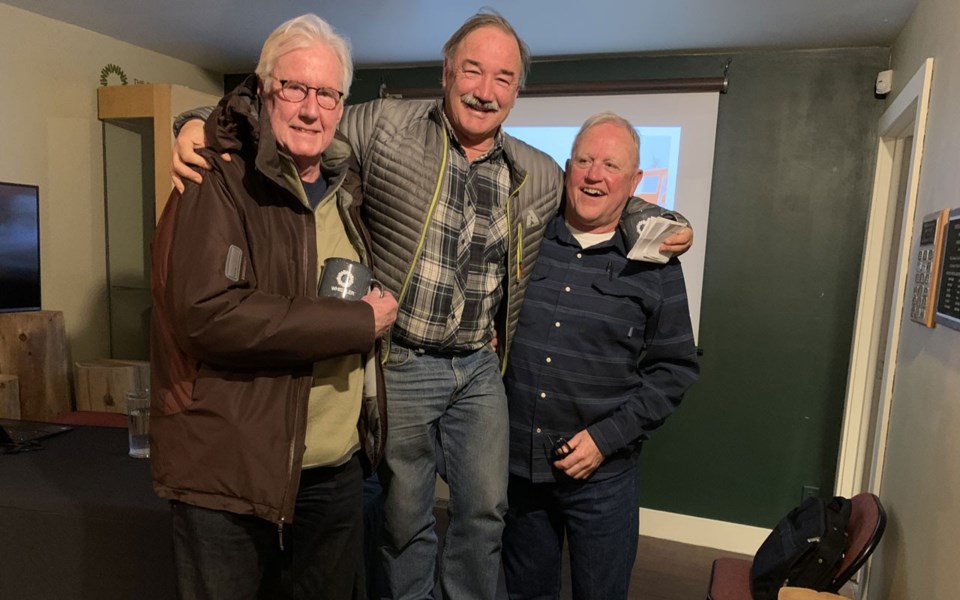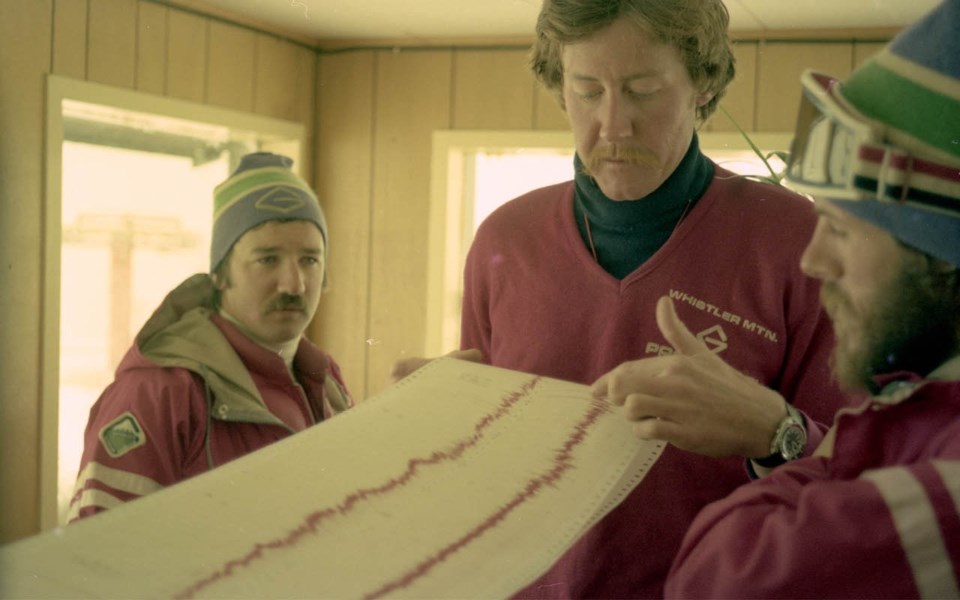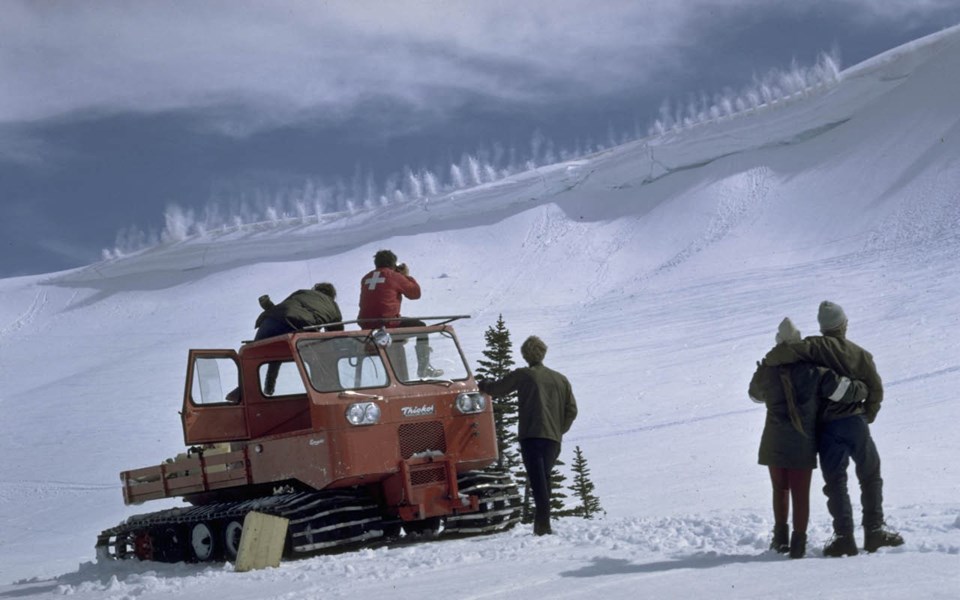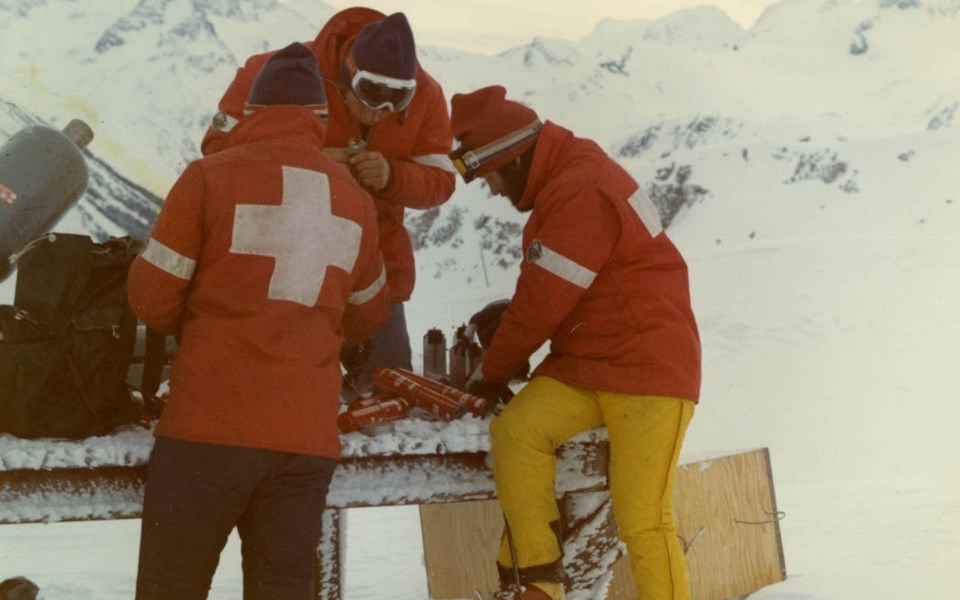
When one thinks ski patrol, few eras seem as distinct (and frankly fun) as the 1970s and '80s.
Long before the advent of fat skis, Whistler's pro patrollers were constantly adapting and innovating, learning how to safely manage a glut of dynamic—and dangerous—terrain that quickly came online.
Curtis Petersen's 1980 short documentary, Pro Patrol, continues to serve as an important document of this time, providing fascinating insights into the important work of Whistler Mountain ski patrol.
The documentary—which features stunning images of patrollers setting off massive avalanches and skiing deep fields of powder on 200-centimetre-plus race skis— served as a jumping off point the first of the Whistler Museum's 2020 Speaker Series, held on Jan. 29.
Sitting in front of a rambunctious standing-room only crowd (there were plenty of current patrollers in the house), former Whistler Mountain pro patrollers Roger McCarthy, Brian Leighton and Bruce Watt reminisced on some of the challenges faced, as well as some of the hijinks that made patrolling in that era so fun.

McCarthy, who served on the ski patrol between from 1974 to 1990, opened up the talk by discussing a harrowing rescue that he and team of fellow patrollers undertook in 1978.
A skier was stuck in the West Bowl, requiring patrol to take a cat ride to the Saddle on Glacier Bowl, before traversing the rest of the way.
"From there on, we had to drag the toboggan up and over these piles of rocks and stuff and around the backside of Whistler Bowl," he explained.
That injured person, it turned out, was Curtis Peterson, who had broken his leg.
"He showed up a year later and made this film," remarked McCarthy.
The 1980s was marked by ferocious competition between Whistler Mountain and then-upstart Blackcomb Mountain.
In 1980, Whistler opened the Village Chair, along with a whole new network of runs.
Blackcomb, which officially opened in December 1980, opened the Jersey Cream chairlift in 1982, and then, in 1985, the 7th Heaven T-Bar.
"We had to look at that thing for a year," said McCarthy, drawing big laughs from the audience.
In 1986, Whistler responded with the Peak Chair, opening up five magnificent bowls to ski.
The Peak Chair was a "game-changer" for the mountain, said McCarthy.
Yet opening all of the new terrain it allowed access to represented a significant challenge to patrollers.
"Just the signage and avalanche control" alone created a lot of work for patrollers, said McCarthy. "All of a sudden, we were in the helicopter for over an hour ... And you know, it's two loads of bombs, come back and get another box, go out there and just blow the crap out of everything."
The lack of skiers, he added, meant that slopes didn't get the "skier compaction" that they don now, making them more susceptible to avalanche risk, he explained.

That original Peak Chair featured a mid-station, and according to Watt, it turned into a bit of "a money-maker" for the enterprising patrollers.
"People would have their poles between their legs and they'd get to that ramp and they'd snap both poles in two," he explained.
"Then they'd get to the top, and patrol had prepared poles from the day before and would sell [them] to these new people."
"Ya, the tip fund—we did pretty well," said McCarthy, prompting another round of big laughter from the audience.
"We had an eggnog party at Christmastime that left scars on a few people."

Brian Leighton served as a patroller between 1974 and 1980, before serving in patrol director and safety manager roles.
Following the talk, he said that when the documentary came out, he thought it was bit cheesy, but that doesn't diminish its overall importance.
"When I first saw it, when it was made, it was kind of hokey and built us up to be some kind of heroes," he said. "We were just regular guys out there doing what we had to do.
"But it's very nostalgic now, to see some the faces. Some of those faces aren't with us any more."



